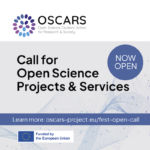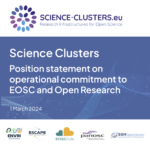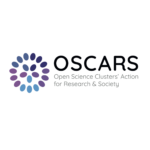Video interview with Dr. Alessa Gambardella on the advantages the EOSC could bring to researchers in the field of cultural heritage
Dr. Alessa Gambardella is a former post-doctoral scientific researcher at the Rijksmuseum Amsterdam (sponsored by AkzoNobel), and user of the synchrotron at the ESRF, leading partner in PaNOSC. Alessa’s work in the field of cultural heritage focuses on understanding ultramarine disease – a degradation phenomenon that affects oil paintings containing ultramarine blue pigment.
Watch the full interview:
The parallel of her study with medical research is very paradigmatic: like a doctor, Alessa has patients, which are the oil paintings affected by a degradation process due to the presence of ultramarine blue pigment. And much like in the study of medical diseases, it is necessary to make a diagnosis first, and understand the mechanisms behind these degradation phenomena through analysis across many scales, and through the use of non-invasive techniques, also by micro-sampling or ‘biopsing’, and later identify and develop safe and effective treatments for prevention and conservation.
In addition, Alessa describes that even if the technologies used in heritage and medical sciences are very similar, searching for and sifting through literature in the different disciplines can be very challenging.
This is where the EOSC comes into place. In Gambardella’s view, “EOSC can help support in solving this challenge, because it connects disciplines on a level where the languages are the same – that being measured data – and this in the end shall help researchers more easily find parallels and work more closely together”. For Alessa, interdisciplinary research in Europe, as well as validation, use and re-use of data will be much easier in the future through the EOSC, which will make available FAIR research data across all disciplines.
When answering to the question on how her scientific domain would benefit from the EOSC, she replies that “EOSC will offer cultural heritage institutions a platform for sharing collections-based data, which will enable epidemiological studies related…to any degradation phenomena, or conditions-based inquiries” helping to answer questions that reach beyond that possible with the relatively small datasets acquired in a single collection or site. In her vision, the existing parallels between cultural heritage and medical studies, as well as the wide variety of samples and datasets produced in her research field, make the EOSC a promising environment to share data, to make new connections with researchers across disciplines, and to ensure the preservation of cultural heritage objects and sites in the long-term.
This is key, because “unlike the lifetime of a patient, the lifetime of cultural heritage is earmarked to be eternal, and because the health of cultural heritage depends on our continued understanding of its condition, it is therefore essential that we care for the recorded data from which we gleam this understanding. That means that the recorded data from cultural heritage must therefore survive through continually changing technologies, and I think that the EOSC is the only way that this will be feasible…. Thus, I think it’s only fair that cultural heritage data is FAIR to all.”


